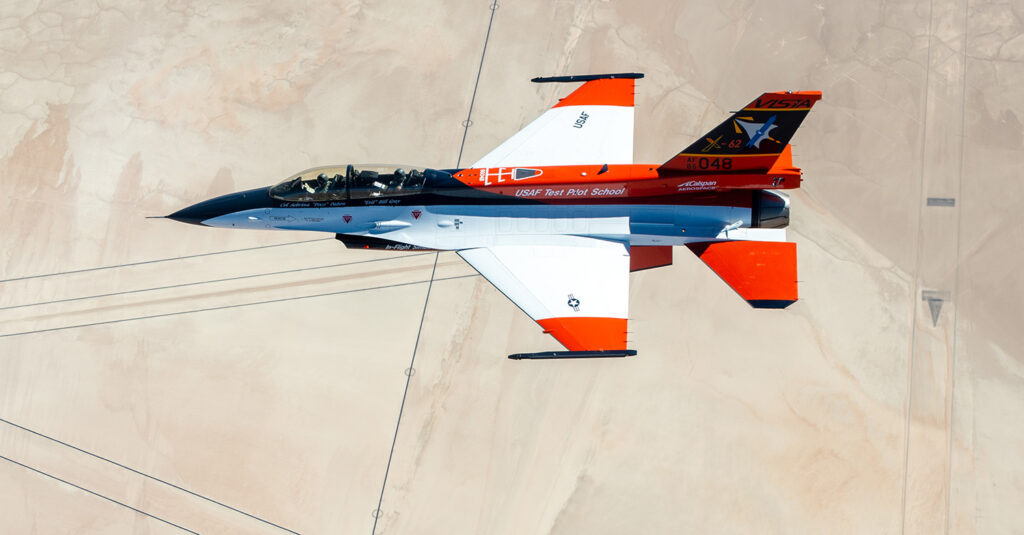After more than a year of requests, Ukraine is finally about to start receiving General Dynamics F-16 Fighting Falcons to aid in its efforts against the ongoing Russian invasion. On Monday, the Netherlands announced plans to transfer 42 F-16s to the embattled nation just as soon as Ukraine’s pilots have been trained to operate them, with Denmark following suit with a promise for 19 more, and Norway announcing that it will also give a handful.
But while this is certainly a victory for Ukraine, it’s important to understand not only what these highly capable jets can do, but also… what they won’t. Ultimately, a fleet of F-16s will provide Ukrainian forces with a significant increase in both air-to-air and air-to-ground capabilities, but the platform is 47 years old. Further, no single platform or system – not even one as capable as the F-16 – can win the war for Ukraine. And what will ultimately matter most is how these aircraft are leveraged within a broader overarching combat strategy.
New fighters require new tactics
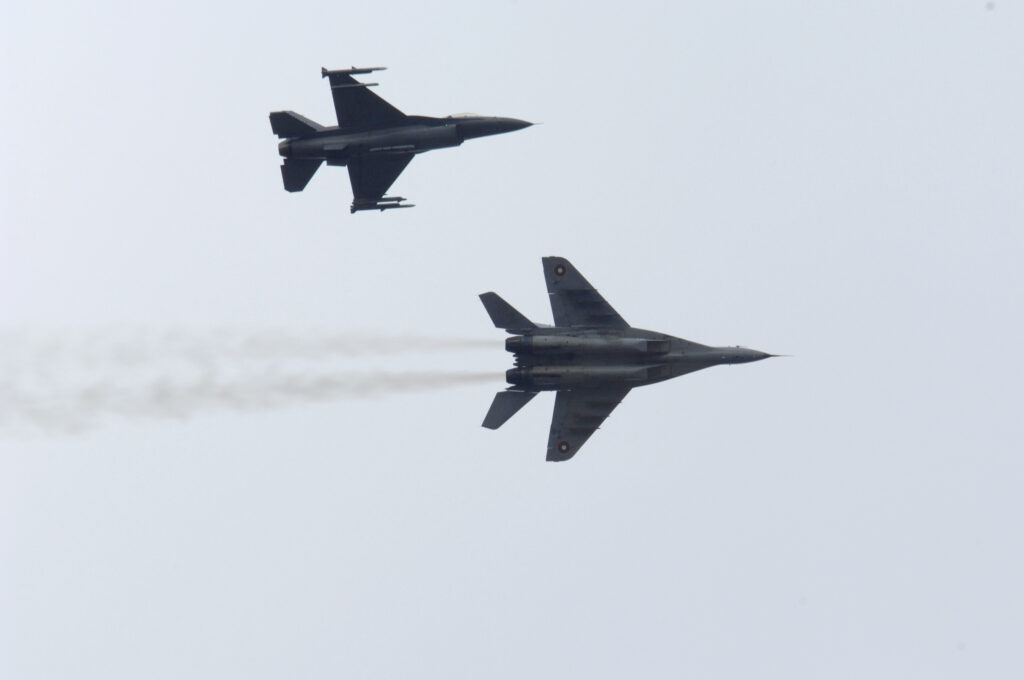
Ukraine’s fighter fleets, composed of Soviet-era MiG-29s and Su-27s, may look similar to those operated by Russia, but they carry even older avionics that further limit these dated fighters’ performance.
“A Russian jet can see 2-3 times further with its radar than our fighter,” Yurii Inhat, a spokesman for Ukraine’s airforce command told the Wall Street Journal. “Our fighter is simply blind, it cannot see.”
As a result, the F-16s Ukraine will receive will offer a significant increase in capability, even if they are largely carrying systems that first emerged in the 1990s. However, it’s also important to remember that technology is only one piece of the combat puzzle, and the ways in which these platforms are leveraged in the fight will dictate a great deal of their value.
“The integration of avionics, weapons systems, and weapons are decades ahead of what [Ukraine is] flying now,” retired Gen. Philip M. Breedlove, a former F-16 pilot as well as NATO Supreme Allied Commander, said. “There will be an increased capability, increased radar range, increased weapons range, etc. But this is not the be-all to end-all.”
As retired U.S. Air Force Brigadier General John Teichert has explained, the United States’ approach to fielding new weapons comes with a great deal of education, training, and combat exercises intended to ensure their use comes as second nature to American aviators. While Ukrainian pilots are being trained to operate these fighters, it would be nearly impossible for them to demonstrate the same level of proficiency in the near term.
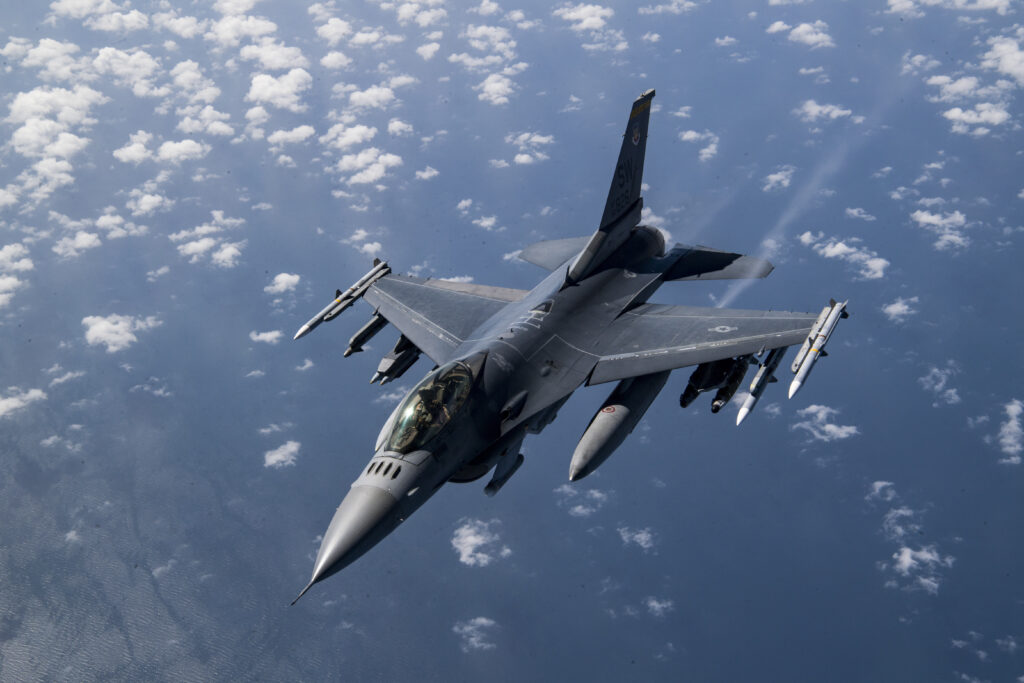
As General Breedlove explained, if Ukrainians aren’t well-versed in the proper tactics to leverage these more advanced fighters, “you’re not going to realize any of the benefits of having a real four-plus generation aircraft. If you take an F-16 and fly it and use it like a MiG-29, you’re just going have a hotrod MiG-29, and that’s it.”
It’s also important to understand that system updates, upgrades, and replacements happen over time, meaning two F-16s of the same designation and flying for the same country may offer different capabilities based on the systems they have onboard and the weapons they’re capable of carrying. The single-seat F-16AMs and two-seat F-16BMs being provided to Ukraine are indeed pretty dated – receiving Mid Life Updates in the early 2000s to bring them approximately on par with the Block 50/52 F-16s the United States operated during Desert Storm.
There are a veritable ton of variables that could affect the F-16’s performance in Ukraine, and while it’s all but certain that they will offer a big boost in combat capability and capacity, anyone who purports to know exactly how these new fighters will change the dynamics of this conflict is either ignoring the complexities of the situation or being downright dishonest.
Related: Russia is suffering from Ukraine’s cluster munitions, Russian colonel reveals
Russia still has a great deal of airpower to leverage
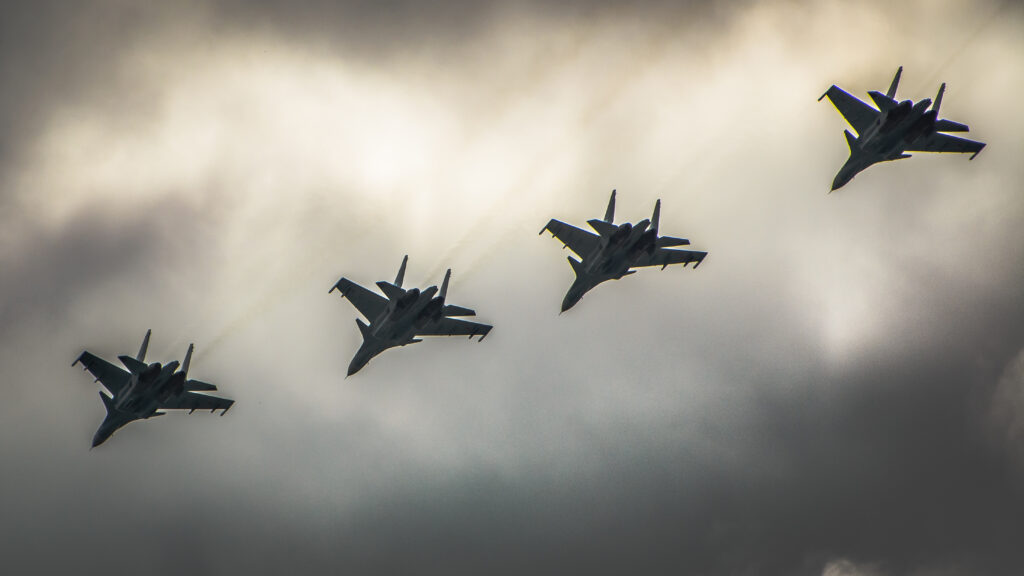
A common Western error is to assume that Russia has failed to secure air dominance over Ukraine because it lacks the fighter capacity to do so. As Sandboxx News has covered at length previously, Russia’s warfare doctrine is very different from the Western or American way of war that we’ve come to recognize as effective in recent decades.
The United States prizes air superiority as the means to improve the circumstances of all subsequent combat operations. Russia, on the other hand, has established a warfare doctrine with NATO in mind, and as such, Russian planners made the fairly astute assumption that they would not be able to secure air superiority in a potential conflict with NATO. As such, airpower is not seen as a power unto itself in Russia, but rather, as a sort of long-range extension of Russia’s focus on securing fire superiority.
“Russian air doctrine is very different than Western air doctrine. They don’t use airpower other than as a means of an extension of ground forces,” retired Air Force Lt. Gen. David A. Deptula, dean of AFA’s Mitchell Institute for Aerospace Studies, explained.
Now, this should not be seen as a defense of Russia’s inability to control Ukraine’s airspace, as the way this conflict has unfolded over the past 18 months clearly demonstrates the failings of this doctrine.
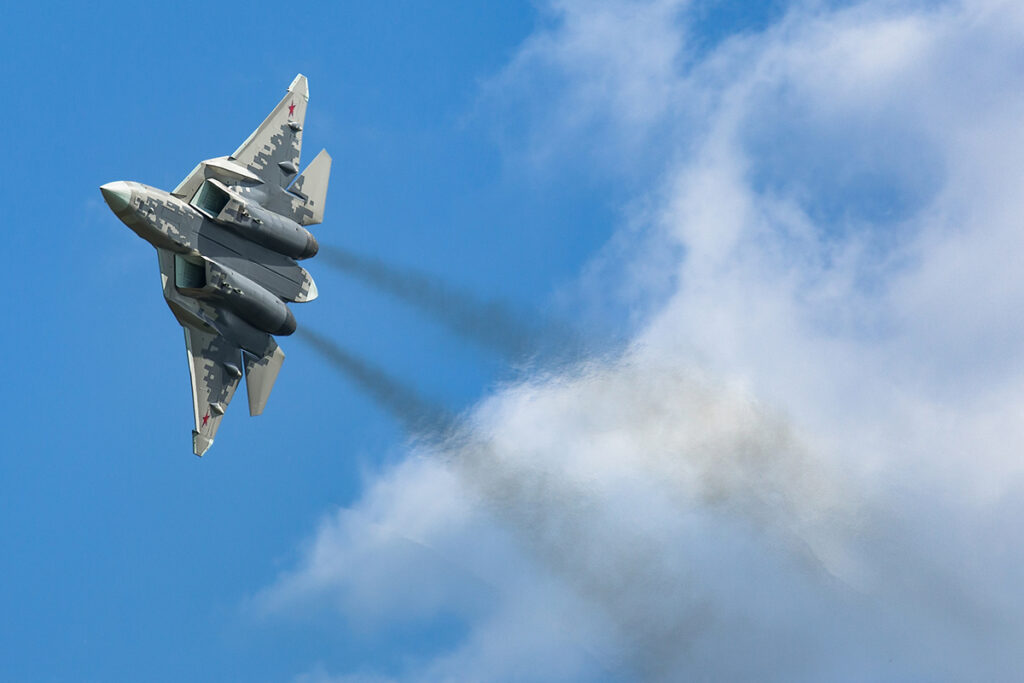
In other words, if Russia believed it could dominate airspace in large-scale conflicts, its doctrine would reflect that. But because Russian planners know they likely can’t, they’ve adjusted their planning to suit. This isn’t an example of Russia simply choosing a different approach to warfare so much as an example of mitigating its own strategic and tactical shortcomings. Russia’s defense apparatus gave its planners lemons, and this approach to warfare is their best attempt at making lemonade.
The Russian Air Force was believed to have more than 900 fighters in its inventory at the start of this conflict, with nearly half dedicated to attack operations and the remaining considered either multi-role or air intercept platforms. Assuming a below-average but believable readiness rate of 50%, that leaves a total of fewer than 450 fighters available for the breadth of Russia’s operations, which include territorial defense, operations in Syria and elsewhere, and the war over Ukraine. Russia has also struggled with pilot shortages, forcing it to take instructors out of their training environments and thrust them into front-line combat, which further limits both the volume and efficacy of their fighter sorties.

Concerns about these pilot shortages and sanctions stifling aircraft production have left Russia somewhat conservative in its use of airpower. This means that it’s often keeping aircraft inside Russian airspace while launching longer-range weapons into Ukraine. F-16s carrying AIM-120 Advanced Medium Range Air-to-Air missiles will make that a far more difficult proposition. Ukrainian pilots currently rely on Soviet-era R-73 radar-guided missiles and both radar or infrared-guided iterations of the R-27, all of which fall 30 or more miles short of the AMRAAM’s publicly disclosed range.
But even with all of that in mind, Ukrainian F-16 pilots will almost certainly still be fighting an uphill battle against superior numbers, making it not necessarily a question of “who would win between an F-16 and a Su-27?” but rather, it may often be, “who would win between an F-16 and two Su-27s?”
Ukrainian pilots have proven to be incredibly resourceful thus far in the conflict, however, managing to keep the airspace over their nation contested while supporting ground troops and engaging Russian air defense systems – and there can be no doubt that their ability to do all of these things and more will my significantly improved by the addition of F-16s into the equation.
Related: Ukrainian company offers $1 million to Russian pilots who defect
How F-16s can dramatically improve the suppression of enemy air defenses

Perhaps the most potent improvement the F-16 can offer Ukraine (beyond bolstering airframe numbers) is in the suppression or destruction of enemy air defenses (SEAD/DEAD). The nimble F-16 has proven extremely effective in this role for the United States since absorbing it from the F-4G Wild Weasel. American F-16s tasked with the job often receive specialized equipment to coincide with Wild Weasel pilots’ specialized training, even the somewhat dated F-16s heading for Ukraine will immediately offer a significant boost in SEAD capability. (Wild Weasel can refer to any type of aircraft that is equipped to conduct SEAD missions.)
Ukrainian forces have been leveraging America’s AGM-88 High-Speed Anti-Radiation Missile (HARM) since August of 2022 or earlier, but because these weapons are being deployed by dated Soviet jets that were never intended to use them, their utility has been dramatically limited.
Anti-radiation missiles like the HARM work by honing on the electromagnetic radiation broadcast by radar arrays – in other words, radar waves – making them uniquely suited for the SEAD role. American Wild Weasel pilots often fly their aircraft into contested airspace, waiting for enemy air defense systems to power up in an attempt to target them or their wingmen. Once the air defense systems are broadcasting radar waves, Wild Weasel pilots launch their HARM missiles to hone in on those radar waves and destroy the air defense equipment.
It’s important to understand that there are several iterations of the HARM missile, each with a few unique capabilities and limitations, so for the most part, we’ll have to speak in generalities about how the new modes available with the F-16 could affect the SEAD mission.
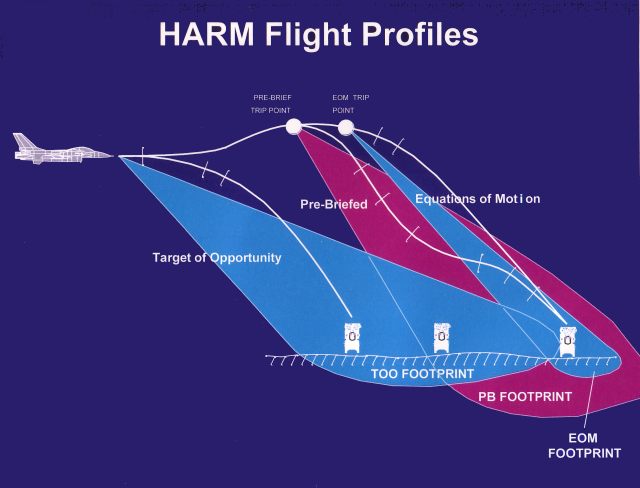
Ukraine’s Soviet-era fighters are only able to leverage the HARM missile in what many call the “pre-briefed” mode. In effect, the missile is pre-programmed with a target area and then launched by an aircraft, often at a fairly long distance. The missile flies toward its intended target area, using its seeker to look for any air defense systems powering up and broadcasting radar waves for it to then close with and destroy.
This method can be very effective, especially when launching these missiles in volume, as even if they don’t ultimately destroy enemy radar sites, their presence alone will often prompt air defense crews to power down their arrays. This effectively amounts to suppression of air defenses, as those powered-down arrays allow aircraft to operate inside the contested area for a short time. However, once the HARM threat has passed, these arrays can power back up and begin hunting for Ukrainian jets all over again.
However, if operated by an aircraft carrying NATO-standard busses that allow pilots to leverage their full capability set, HARMs have two more operational modes that can be very handy in a fight, “self-protect” mode and “target of opportunity” mode. In self-protect mode, the aircraft’s onboard radar warning receiver identifies an enemy radar array that’s broadcasting. It then passes that target data over to the HARM, which can hone in on either the broadcasting radar or the specific location that waves were coming from in the event the enemy powers the system down. The target of opportunity mode is similar but allows the AGM-88’s onboard seeker to spot enemy radar arrays powering up, which then alerts the pilot to launch the weapon.
These additional modes will provide Ukrainian F-16 pilots with more options for the suppression or destruction of enemy air defense operations, effectively allowing for a larger emphasis on the destruction of these assets than their suppression.
And because these MLU F-16s are equipped with AN/ALR-69A(V) Radar Warning Receivers, they will be much better suited to avoid incoming missiles than Ukraine’s current jets. This brings us to another important value these aircraft can offer Ukraine.
Related: Ukraine’s counteroffensive is picking up steam
Dodging some missiles, shooting down others

Thanks to the Mid-Life Update Denmark and the Netherlands’ F-16s received in the early 2000s, the jets being provided to Ukraine are likely equipped with the AN/ALR-69A Radar Warning Receiver – though it’s important to note that it’s hard to assess exactly how many systems have been installed or upgraded over the years. Regardless of the iteration of the ALR-69A, however, it will offer a significant increase to Ukraine’s ability to dodge incoming Russian surface-to-air and air-to-air missiles. Also, many of these systems received Reliability and Maintainability (R&M) modifications in the 1990s and 2000s, but it’s difficult to say how many.
These RWR systems provide continuous monitoring of the combat environment, rapidly identifying inbound threats, alerting the pilot, and even taking both offensive and defensive action to mitigate threats via electronic warfare capabilities.
The ALR-69A not only detects inbound threats, it provides the pilot with increased situational awareness by showing a graphic representation of the type of threat radar that’s “painting” (detecting) their aircraft in the heads-up display. By using an onboard database of radar frequencies, it recognizes and discerns between not only friendly and enemy radar arrays, but even between the types of arrays leveraged by different weapon systems – providing the pilot with an audible warning immediately upon being targeted, as well as an indicator of the type of weapon they’ve been targeted by.
This would be a boon for Ukraine when leveraging the F-16 for air-to-ground attack missions, currently conducted by Su-25s that often don’t have a radar warning receiver onboard at all.
“Our jets don’t have a system to warn about [Russian rocket] launches,” said a Ukranian Su-25 pilot with the call sign Pumba. “It’s all visual-based. If you see them, then you just try to escape by firing off heat traps and maneuvering.”
This system can obviously also further bolster the Ukrainian F-16’s performance in SEAD missions, but it will also be extremely valuable when flying air support operations near the front lines.

Last December, a Ukrainian fighter pilot identified only by his callsign “Juice” was interviewed by Lithuanian news agency Delfi and broke down the way Russian fighters have been attempting to engage Ukrainian jets using long-range air-to-air missiles like the R-37M.
He described Russian Mikoyan MiG-31BMs flying high-altitude defensive patrols with a single long-range R-37M radar-guided missile onboard, launching as many as six R-37s into Ukrainian airspace per day at some points. These weapons measure nearly 14 feet in length, weigh 1,320 pounds, can achieve hypersonic speeds, and offer a claimed range of nearly 400 kilometers (about 250 miles). That significantly exceeds the range offered by America’s go-to beyond-visual range missile of choice, the AIM-120 AMRAAM which has a publicly disclosed range of somewhere north of just 100 miles.
However, the R-37M is not actually very effective at these extreme ranges: It potentially poses a threat to larger, more sluggish aircraft like AWACS and tankers, but not fighters. When engaging fighters, the R-37M is only really viable inside of around 80 miles, and even at that point, Ukrainian pilots have proven relatively capable of dodging the missiles as they close in (though there are certainly reports of Ukrainian jets being downed by them).
“We created different tactics for how to avoid this missile – and that’s why it’s not so successful against our jets,” Juice explained.
Ukrainian pilots use a method commonly called “notching” or sometimes “beaming,” in which they rapidly change heading to become perpendicular to the inbound weapon’s course, reducing the fighter’s relative velocity to the weapon so drastically in its line of sight that it loses lock. Pilots often pull this off by going inverted, deploying chaff, and entering into a dive – but because many Ukrainian fighters fly at low altitudes, a tight perpendicular turn is also a feasible solution.
However, this approach is only really effective once the R-37M’s onboard seeker spots a target and starts closing with it which alerts the pilot, via radar warning receiver, to take evasive action. This usually happens at just about 20 miles out.
The F-16AMs being transferred from Denmark are equipped with a Pylon Integrated Dispenser Station to deploy chaff to disorient inbound radar-guided missiles. They’re also equipped with Denmark’s Advanced Miniature Jamming System (AN/ALQ-10), which broadcasts radar signals back at weapons to confuse them during their approach. These systems, combined with the ALR-69A RWR will almost certainly further improve Ukrainian fighter’s survivability against these kinds of attacks.
Most Ukrainian fighters also lack the ability to spot and target airborne cruise missiles, which is something else the F-16 will bring to the table.
“Our aircraft have old radars that don’t see [Russian] cruise missiles. We are like blind cats when we try to shoot them down,” Ukrainian Air Force Colonel Volodymyr Lohachov explained to the BBC.
Leveraging F-16s for this role will reduce the strain on Ukrainian air defenses, as well as the logistical strain of maintaining a steady supply of interceptors for both high-dollar systems like the MIM-104 Patriot in Kyiv and the increasingly rare interceptors leveraged by Ukraine’s Soviet-era systems.
Related: Fighter Comparison: Russia’s stealth fleet ranks 11th in the world
F-16s will make logistics easier (in the long run)
While there’s been a great deal of discussion about the challenges of training Ukrainian fighter pilots to fly the F-16, an arguably more important challenge comes in the form of logistics. Operating F-16s requires far more than a capable pilot. Instead, it requires ground crews who are trained and equipped to provide maintenance, weapons techs who are trained and equipped to re-arm the aircraft, and rock-solid logistics to keep a steady supply of parts and ordnance flowing in at all times. These are all massive challenges that the countries supporting Ukraine in its fight seem to believe they can manage.
If that is the case, then this significant obstacle will rapidly turn into an important new strength for Ukrainian forces. To this point, the United States and other nations have had to find parts, equipment, and even replacement aircraft out of other nation’s Soviet-era stocks in order to keep Ukraine supplied. It was a logical approach, as Ukrainian troops already had the training and equipment infrastructure in place to continue operating these aircraft and weapon systems. But this has also proven to be a challenge, as there aren’t many NATO nations with large stockpiles of Soviet gear in good working order to transfer.
The F-16, on the other hand, is operated by more than two dozen different nations around the world and the United States Air Force alone maintains a fleet of more than 950 of these jets. That means nations like the United States, with large Defense coffers to pull from and stockpiles of spare parts and equipment on hand, can more readily provide Ukraine with the supplies they need to keep these fighters in the air. Rather than scraping the bottom of the post-Soviet-parts barrel, Ukraine can receive parts and munitions from standing stockpiles that are actively being replenished by still-existing production lines.
Related: How Russia fooled the world about its ‘hypersonic’ Kinzhal
But these older F-16s will likely not outclass Russia’s most advanced fighters
Providing Ukraine with a respectable number of F-16s will provide the nation with a huge boost in capability, capacity, and even morale. But it’s important to remember that we’re not talking about the latest and greatest top-of-the-line Vipers. Russia will still maintain a significant advantage in terms of numbers, and some of the nation’s most advanced, capable, and well-equipped fighters will still present Ukrainian fighter pilots with real challenges.

There’s a great deal of conjecture about just how well the F-16 can stack up against Russia’s Su-35S (the aircraft’s most common variant). On paper, the twin-engine, thrust-vectoring Russian fighter is the more capable of the two. Despite a much larger wingspan and weight, the Su-35’s thrust vector control gives it a great deal of maneuverability in close quarters and the means to maintain higher degrees of control while flying at a high angle of attack. It comes equipped with Russia’s Irbis-E radar array, which is not as advanced or capable as the more modern Active Electronically Scanned Array radars found in many of America’s front-line fighters, but still outclasses the AN/APG-68 pulse Doppler radar carried by the F-16s Ukraine will get. The Irbis-E is said to have a detection range out to 400 kilometers with modes for air-to-air and air-to-ground operations. The F-16’s AN/APG-68 is said to have a detection range of 296 kilometers, meaning Su-35S will likely be able to spot the F-16 before the F-16 can spot it.
“Our biggest enemy is Russian Su-35 fighter jets,” Juice said. “We know positions of [Russian] air defence, we know their ranges. It’s quite predictable, so we can calculate how long we can stay [inside their zone]. But in the case of fighter jets, they are mobile. They have a good air picture and they know when we’re flying to the front lines.”
But there’s a problem with this on-paper comparison between the Su-35 and F-16… It’s built upon claims made by the Russian government and its primary defense contractors – all of whom have been guilty of exaggerating the capability sets of all sorts of Russian military hardware.
Related: Project VENOM: The Air Force is adding AI pilots to six F-16s
“The Su-35’s specification may indicate it’s a better aircraft by many measures,” former British Royal Air Force Senior Commander and Air Marshal Greg Bagwell told Newsweek, but the true picture “is actually far more complicated than that.”
While the Su-35S does appear to be a rather capable fighter when you asses it in this manner, the pilots who were trained to fly against them offer a different perspective.
Retired U.S. Air Force Lieutenant Colonel Dan Hampton flew 151 combat missions in the F-16 during his tenure in the Air Force, often flying Wild Weasel missions that require an extreme degree of tactical and technical proficiency. His assessment of the Su-35S falls well short of the paper-based conclusions drawn by armchair analysts like myself. Hampton describes the Su-35 as a “typical Russian machine” that “looks good,” but “deep down, it’s not that good of a plane.”
“It looks good at air shows, but my personal opinion is that it’s junk,” Hampton declared in a Ukrainian-language interview he did with Voice of America.
Likely, the truth about the Su-35’s performance lies somewhere in between the claims made by its greatest proponents and detractors, which would make it a formidable foe for Ukrainian F-16 pilots. In truth, Russia will almost certainly send their more capable pilots and fighters after Ukraine’s newfound F-16s in hopes of not only neutralizing their increased combat capabilities but also scoring a significant propaganda victory.
A helping hand to Ukraine
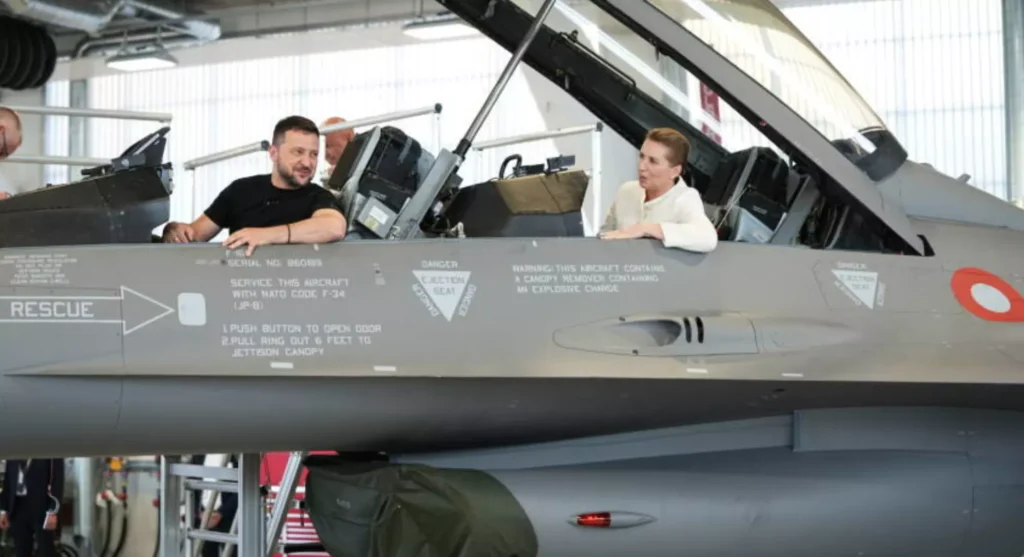
After more than a year of Ukraine requesting F-16s and the global media treating these nearly half-century-old jets like they’re the answer to Russian airpower, any F-16 that’s shot down will be met with a chorus of Russian-backed media coverage and troll farms alike calling the fighter, like Ukraine’s hope for victory, a lost cause.
Of course, this all-or-nothing mentality doesn’t actually reflect nuanced reality. It’s almost certain that F-16s will be lost in this war if they manage to see extensive service. However, lost F-16s will neither make the aircraft nor the effort to provide them to Ukraine a failure – that’s just the nature of warfare.
But it’s important to remember that providing F-16s to Ukraine is, perhaps most of all, a significant show of global support for the embattled country and it’s likely that Russian grey zone operations will take great pains to dismiss and diminish to undercut that global support.
So once these jets start flying in Ukraine, it’s vital that we temper our expectations. F-16s are incredibly capable aircraft, but this war is about much more than fighter jets.
And as such, it’ll take much more than fighter jets to win it.
Editor’s Note: This article has been updated to include a clarification on Wild Weasel missions.
Read more from Sandboxx News
- Women in Special Forces resorted to buying their own armor, study finds
- What now, Wagner Group? How will Prigozhin’s death affect Russia?
- Prigozhin believed dead after plane crash in Russia
- What is OPFOR and why is it among the most fun and valuable things to do in the military?
- Be all you can be: Army releases new ‘First Steps’ recruiting ads


